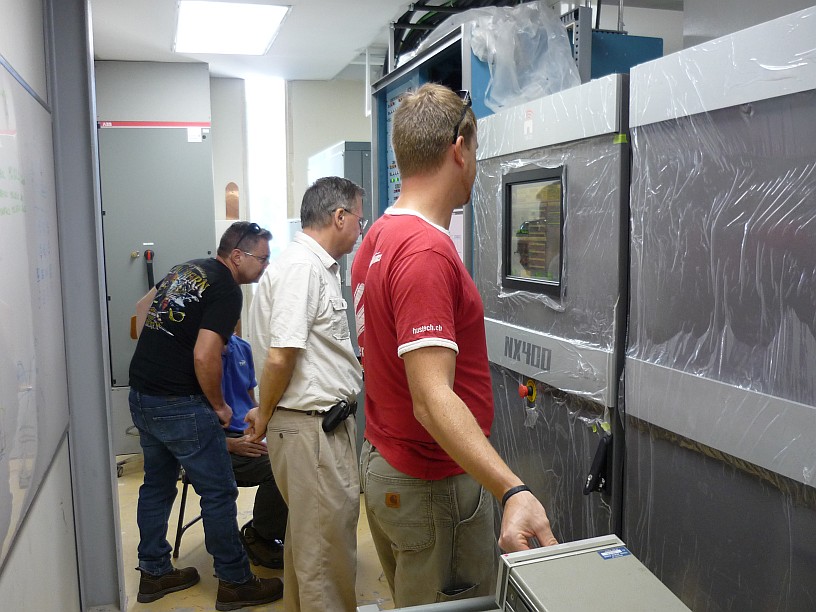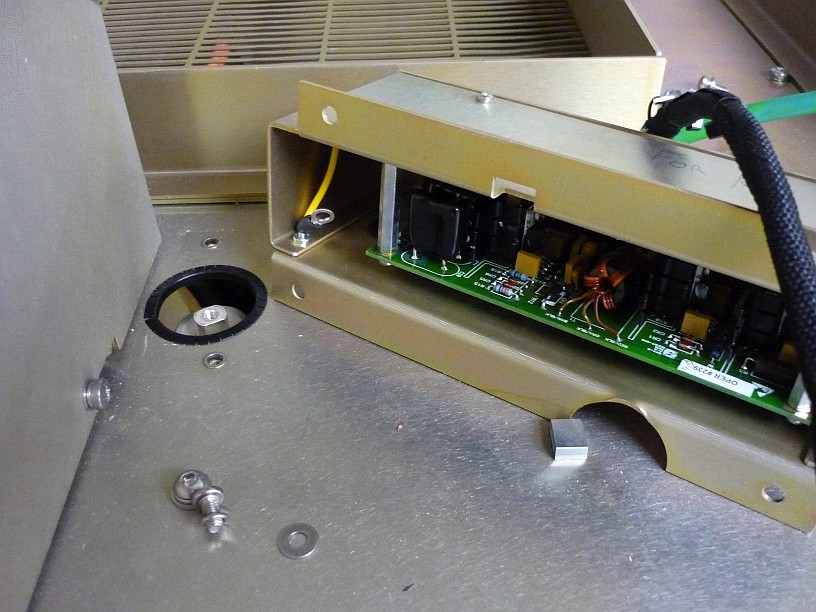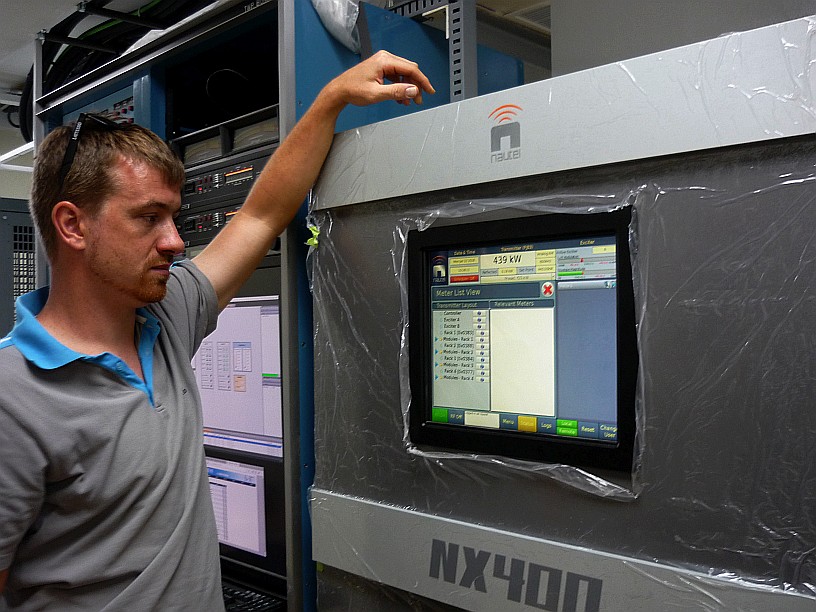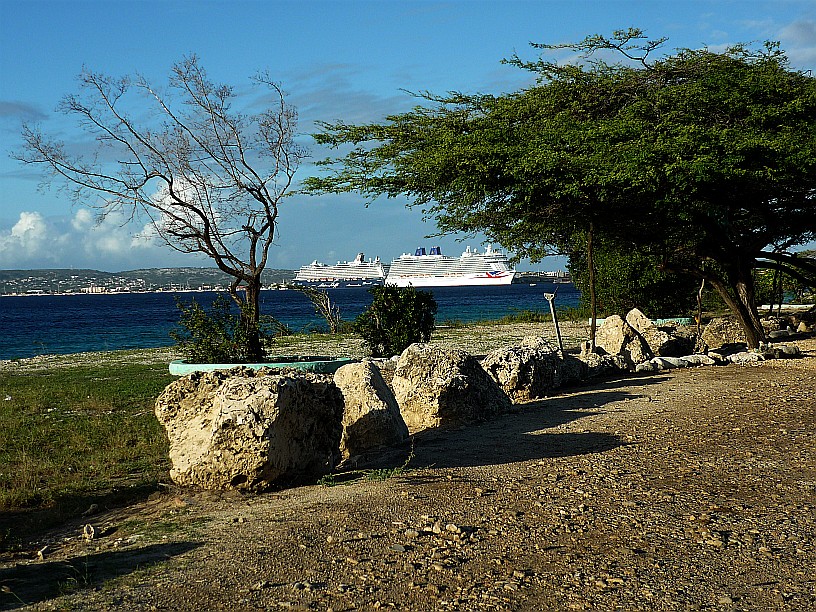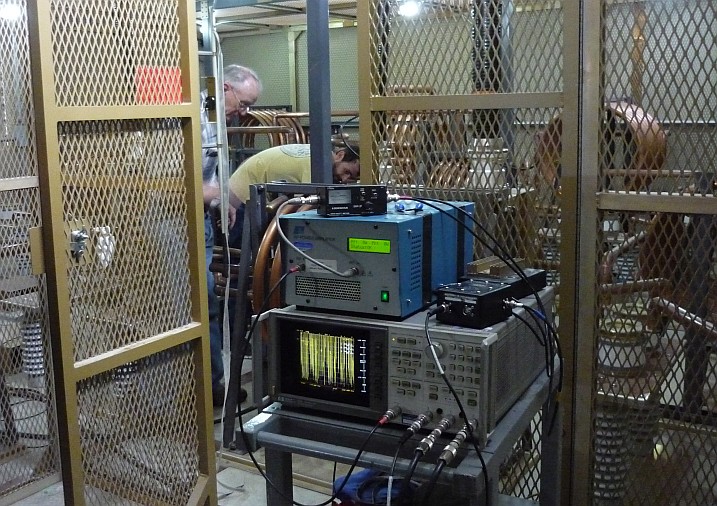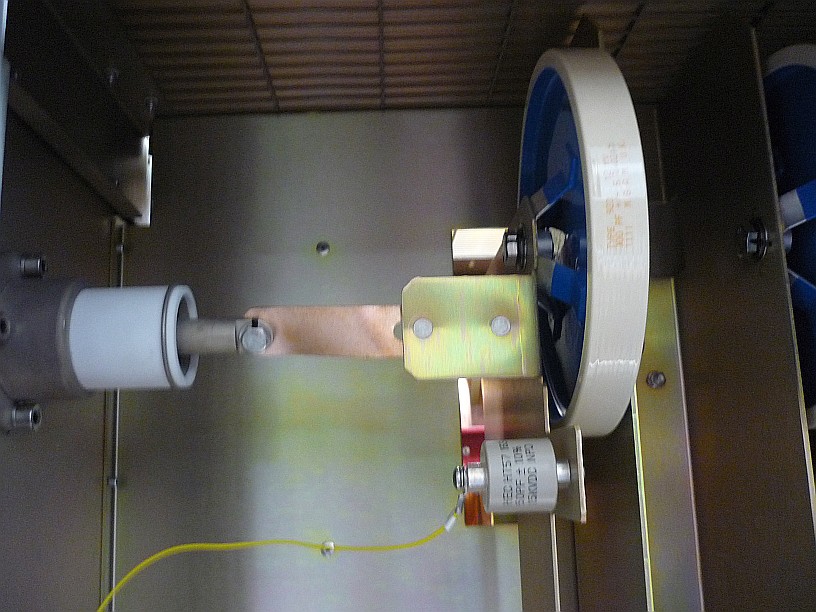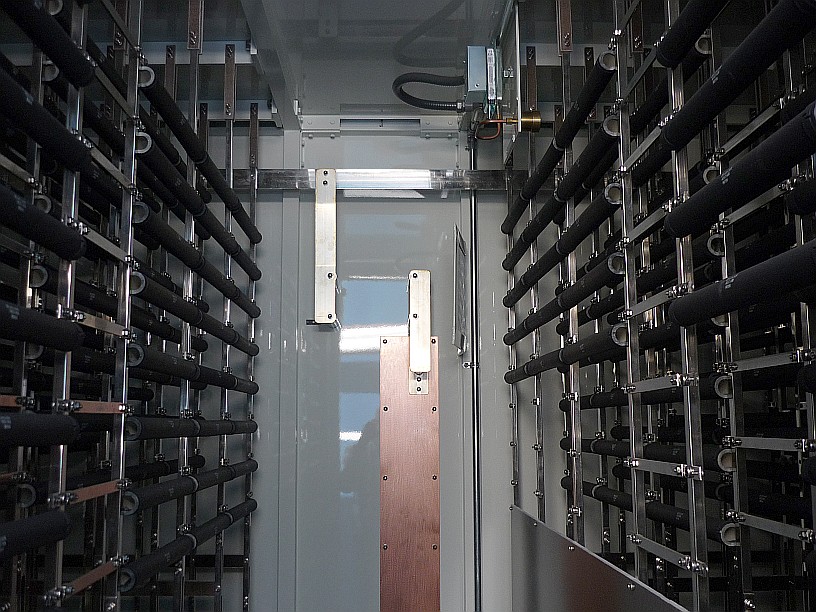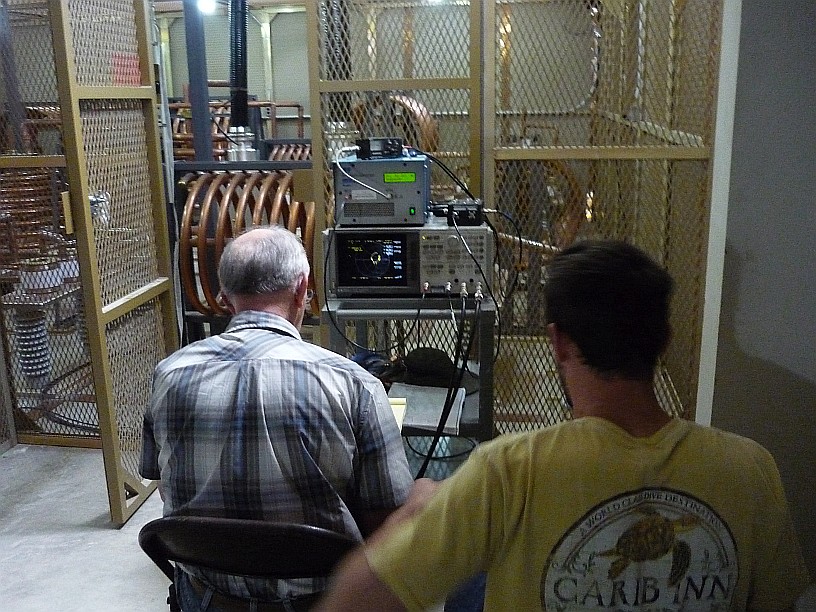This morning, Virginia and Mariette, the station director’s wife, went to Sorobon (at Lac Bay on the east side of Bonaire) to relax and swim. They had a good, and much needed, time together. This afternoon, Virginia did some shopping in town. There were two ships docked again today–one was the Carnival Sunshine, so there were a lot of American tourists everywhere.
Immediately after devotions, WEB arrived to increase the voltage going to the new transmitter. In preparation, we had increased the voltage by one tap on the transmitter transformer. Apparently the voltage from the WEB transformer increases about 5% per tap and the transmitter transformer by about 12% per tap. WEB went up by two taps and the voltage from the output of transmitter transformer went down by 2%, which was too low. The main breaker tripped for some unknown reason. We decided to go back the original taps on the transmitter transformer and go up only one tap from WEB. Everything seems to work well with this 5% increase in voltage.
While WEB was present, we decided to run a test to find out what percentage of tone modulation at 440kw it would take to reach the 955 amp limit of WEB’s transformer. We gradually increased the tone modulation until at 75% the current was 950 amps. Our circuit breaker is set at 960 amps, so we did not go any higher. Checking my calculations from yesterday, I found that my notes indicated the limit would be at 75% tone modulation.
Dave and I took a field strength meter to the airport to record the field strength level there. At 300kw carrier, the Caribbean pattern gave a reading of 1.2 volts per meter, while the north and south patterns were under 0.8 volts per meter. These levels should be within the maximum allowed at the airport.
Back at the site, I installed the 220 volt LED indicator lights in the emergency stop button enclosures. Now there is a visual indication that this circuit is functional.
The air handler that was repaired yesterday seems to be functioning well. The second air handler has been having problems starting. The motor starter box would ‘hum’ without starting the blower, but when I gently bumped the box, the contactor would then pull in and the blower would start right up. There is a switch on the motor starter box that selects between ‘Manual’ and ‘Auto’. This switch is normally set to ‘Auto’ to allow for automated control of the blower. When I switched to ‘Manual’, the blower would start immediately every time. When switched to ‘Auto’, the contactor would hum and sometimes eventually pull in after a few seconds. The starter box was next opened to measure the voltage on the contactor coil. In the ‘Manual’ position, the coil voltage was immediately 23 volts. In the ‘Auto’ position, the coil voltage was only 15 volts. The wiring is the same length for both positions and, as far as I know, the only difference is the contact in the automation system. Hopefully, we will get a chance tomorrow to measure the voltage drop across that contact to see if it is the source of the problem.
Toward the end of the day, Jonas was busy programming the automation system for the 400,000-watt AM transmitter to take over broadcasts from the old 100,000-watt transmitter. There was too much programming still to be done to allow the change to take place this evening. Hopefully, it can happen tomorrow. The initial transmitter power used will likely be 200,000 watts with the increase to full power at the dedication on Tuesday 30 January. More testing at 440,000 watt during non-broadcast hours will be taking place in the remaining days.


